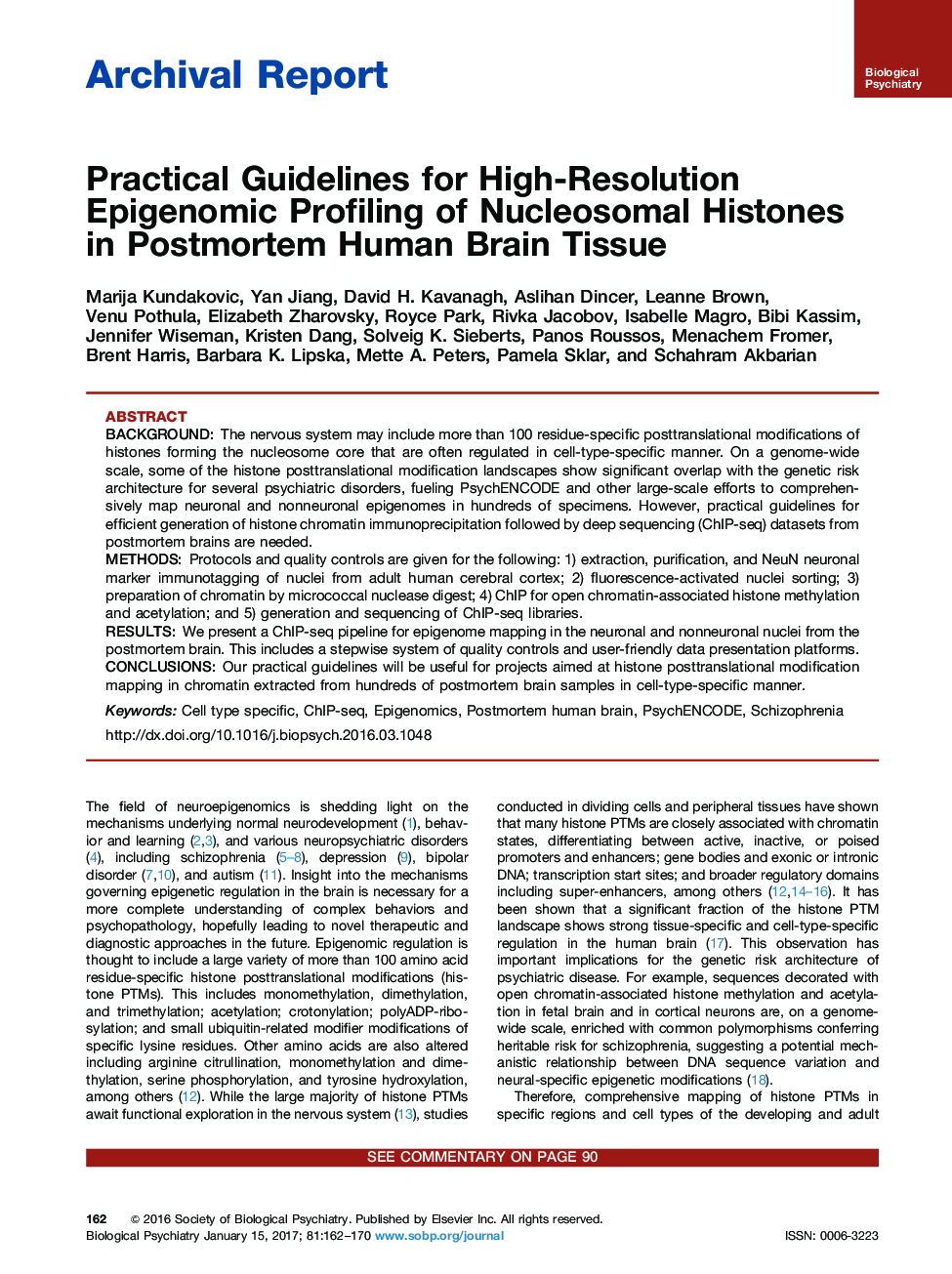| Article ID | Journal | Published Year | Pages | File Type |
|---|---|---|---|---|
| 5720962 | Biological Psychiatry | 2017 | 9 Pages |
BackgroundThe nervous system may include more than 100 residue-specific posttranslational modifications of histones forming the nucleosome core that are often regulated in cell-type-specific manner. On a genome-wide scale, some of the histone posttranslational modification landscapes show significant overlap with the genetic risk architecture for several psychiatric disorders, fueling PsychENCODE and other large-scale efforts to comprehensively map neuronal and nonneuronal epigenomes in hundreds of specimens. However, practical guidelines for efficient generation of histone chromatin immunoprecipitation followed by deep sequencing (ChIP-seq) datasets from postmortem brains are needed.MethodsProtocols and quality controls are given for the following: 1) extraction, purification, and NeuN neuronal marker immunotagging of nuclei from adult human cerebral cortex; 2) fluorescence-activated nuclei sorting; 3) preparation of chromatin by micrococcal nuclease digest; 4) ChIP for open chromatin-associated histone methylation and acetylation; and 5) generation and sequencing of ChIP-seq libraries.ResultsWe present a ChIP-seq pipeline for epigenome mapping in the neuronal and nonneuronal nuclei from the postmortem brain. This includes a stepwise system of quality controls and user-friendly data presentation platforms.ConclusionsOur practical guidelines will be useful for projects aimed at histone posttranslational modification mapping in chromatin extracted from hundreds of postmortem brain samples in cell-type-specific manner.
